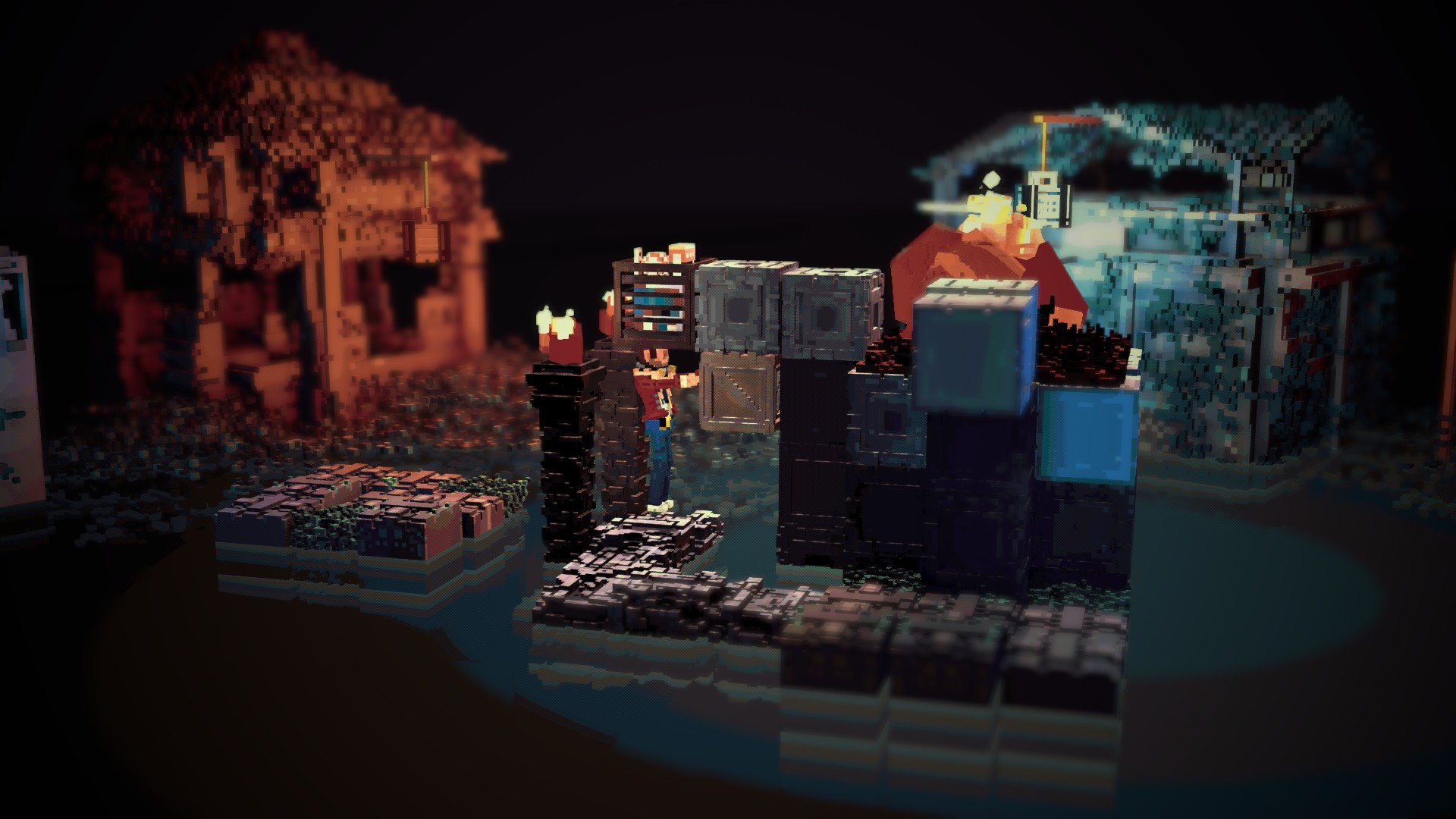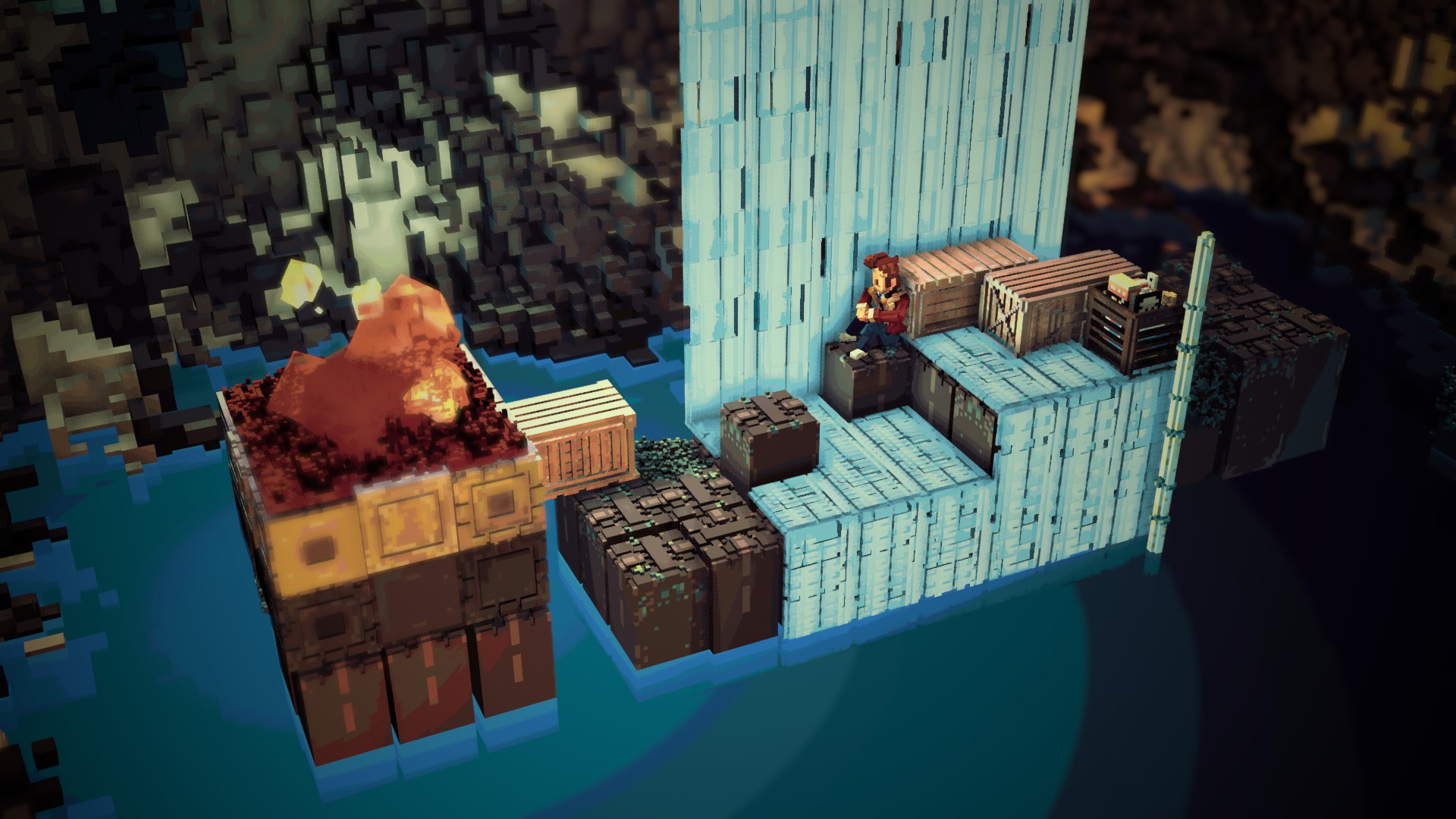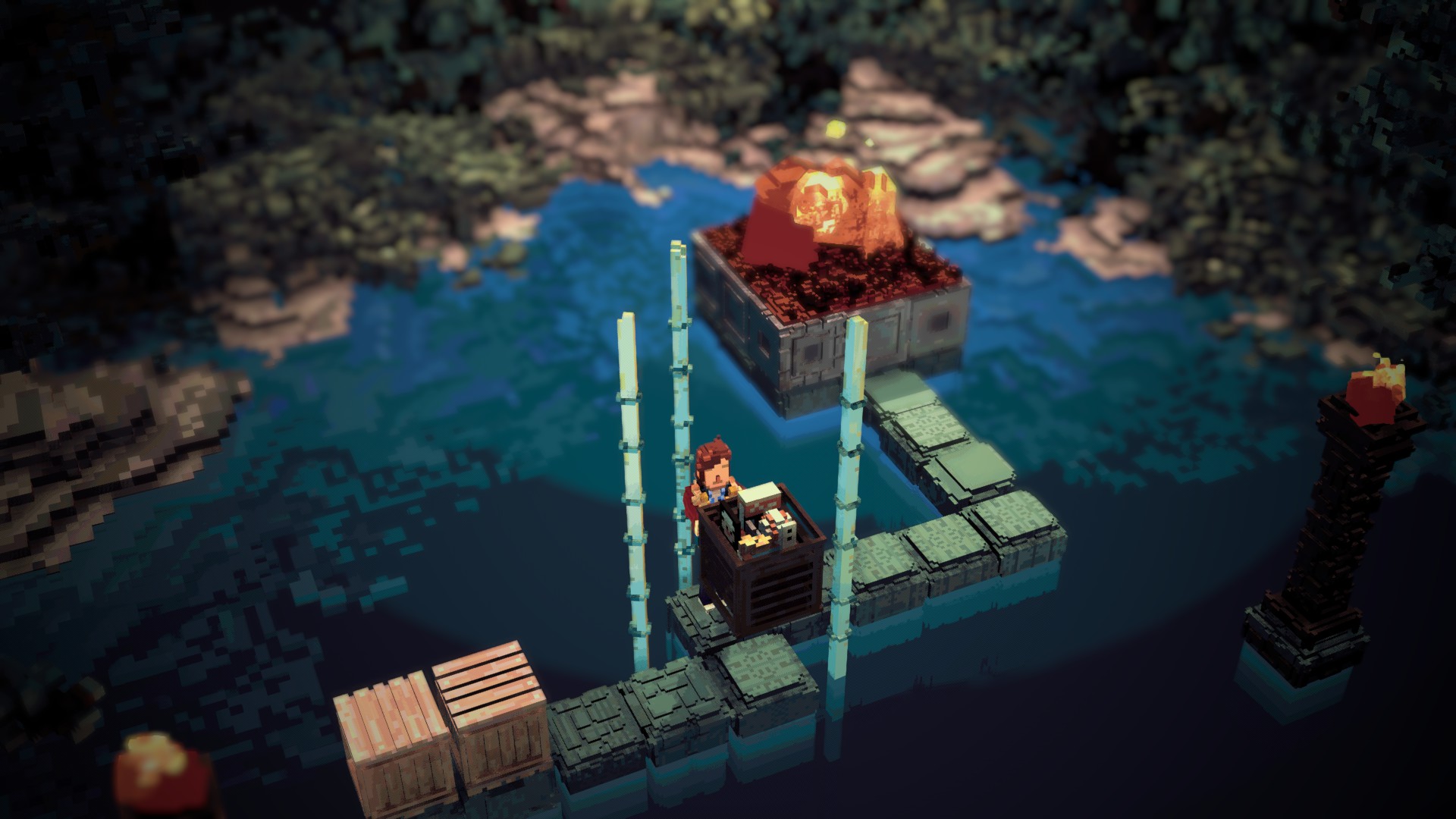Our Verdict
An atmospheric world with deep, absorbing puzzles, Bonfire Peaks is thoughtful and charming—but without establishing its tricks, it risks leaving less fluent puzzlers behind.
PC Gamer's got your back
What is it? A sokoban puzzler where you burn crates of your belongings in a voxel-styled forest ascent.
Expect to pay $20/£15.49
Developer: Corey Martin
Publisher: Draknek & Friends
Reviewed on: Windows 10, Intel Core i5-8300H, 8GB RAM, GeForce GTX 1050
Multiplayer? No
Link: Official site
As I sit in the snow at the peak of Bonfire Peaks, I contemplate reaching the final part of my journey: failing to complete the game. I've been on a beautiful tour of puzzles so tricky that I, too, wanted to pack it all up and move to the woods, but it ends here. Whatever closure the main character is looking for by burning all his belongings, he won't quite make it, and neither will I.
The setup is simple. Our unnamed protagonist has left for the woods to burn his possessions, and it's your job to push, drop or slide his crates full of stuff into a fire. In this block-y, voxel world, you can only move forward, backwards, or pivot on the spot. A crate (or any block) you're holding will swing round as you turn too, so space is key. Early puzzles set the stage simply on how to navigate your way through, each using precisely as much space as it needs to.
As Bonfire Peaks progresses, it introduces new elements—longer bricks, conveyor-belt like streams, and Indiana Jones-esque pressure traps among them. Unlike the smooth onboarding at the start of the game, the introduction of these more complicated puzzle elements can feel disruptive.

With the long bricks, for instance, I first met them in the overworld as a bridge. So in the puzzle that immediately followed, I built on that idea, and tried to configure a bridge between myself and my crate of stuff. It didn't quite reach, so I iterated—attempting different versions of the same idea. Each failed, until I eventually realised I needed to use those bricks to push the crate instead.
It might seem obvious to try another tactic, but the puzzles in Bonfire Peaks are tricky. Failing a few times is a necessary part of troubleshooting your way through to the correct approach. So building a rubbish bridge didn't immediately signify that I wasn't supposed to build a bridge at all.
As you climb through the forested overworld, you encounter remnants of the life you're presumably leaving behind. The big calculator and chunky TV say 'I'm burning all my belongings to escape to nature', but other elements suggest something more tragic may have happened. The distribution of large, obvious symbols to suggest a story feels more on the nose than it does sentimental, however. Paired with more random assets—including a baffling pile of sliced watermelon at the emotional climax of the game—the effect feels distracting.
Your travels through the forest takes you through different biomes, which add a sense of progression to the whole journey, especially where these zones offer new and different takes on the puzzle mechanics you've encountered before. The man climbing behind the waterfall is surely changed from the one who first left his car at the bottom of the hill. The music subtly shifts, and the soft-focus backgrounds of the puzzles change from coloured leaves to old buildings to burning lava. When did it start snowing? Surely, it hasn't been snowing this whole time?

There’s a meditative quality to the game—to getting in the zone with a puzzle, and letting the music fade away as you concentrate
There's a narrative in overcoming the puzzles, in the transition between the different areas of the forest, in your scrambling ascension to the peak. In contrast, the strewn about implications feel distractingly post-hoc, as if the game was anxious that players wouldn't be satisfied without being told why they're there. Perhaps I'm a little too close to changing my name and fleeing the country, but I'd already bought in to the catharsis on offer.
What carried the effect most was the dedicated 'sit' button. There’s a meditative quality to the game—to getting in the zone with a puzzle, and letting the music fade away as you concentrate—and having the option to just sit brings it into that universe. Watching your character set down his tasks and lean back when there’s space to look at the sky, or sit huddled up, holding his knees. The simplicity of the voxel art style adds extra charm on top.
Bonfire Peaks' care to neither frustrate nor condescend contributes to its meditative feel. You only need to complete a few puzzles per zone to progress, although completing more does open up more areas. It’s a quick tap of a button to undo a careless mistake—or to capitalise on one that triggers an 'aha' moment—and you can undo your way all the way back to the beginning of the puzzle, if you so choose. You can even undo a puzzle reset, regaining all your previous hard work. It's a careful balance to keep you in your element.

This consideration backfired for me, however. I increasingly found that as I progressed through the forest that there was obviously something I didn't get, some foundational part of the puzzle's logic. There were zones where I set a significant number of puzzles aside because I couldn't see ways to even experiment, let alone divine a solution.
There were hints of this earlier on in the game, where one puzzle wouldn't make any sense at all until I finished a different puzzle in the same zone and learned a new 'trick'. But as I approached the end of the game something seemed to be fundamentally missing, as if I hadn't learned how to pick up boxes. So when I reached the climax of the game, I found myself unable to complete the puzzle to make the final ascent. When the solution was later shared with me, it turned out I'd been building bad bridges all over again: by not mastering a late-game mechanic, I'd only learnt a wrong way to read the puzzle.
Any individual puzzle in Bonfire Peaks is good—brilliant, actually—tightly crafted, using every part of a puzzle map for necessary bottlenecks, obstructing height, or escalating stairways precisely as needed. Its world is beautiful, and as a collection of puzzles, it's incredibly smart. If only its uneven progression and self-conscious story additions didn't make for as rough a climb.
An atmospheric world with deep, absorbing puzzles, Bonfire Peaks is thoughtful and charming—but without establishing its tricks, it risks leaving less fluent puzzlers behind.


